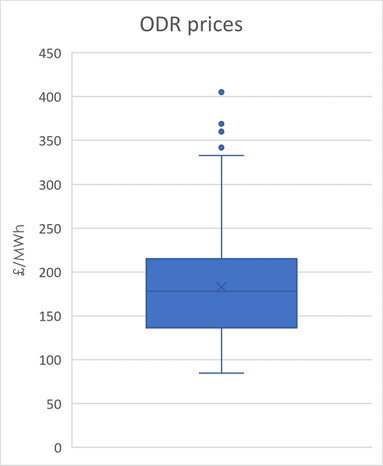Posted on: 12/07/2022
Following the recent launch of our Optional Demand Response (ODR) trial service, Boz Bozhkov, Head of Product, explains how SmartestEnergy is using demand response to help customers take advantage of the current market volatility.
The global pandemic and major geopolitical power repositioning are only a few of the challenges currently facing the energy industry, and many companies have been forced to look for new tools to survive these trying times.
Demand-side response (DSR) is an integral part of the energy system and is recognised as a vital form of flexibility and a potent balancing tool. It has always been challenging to deliver in practice due to high opportunity cost, contractual and operational complexity, and the inability to confidently forecast. Despite continued support from the government, TSO/DNOs and industry, the current demand turn-down capacity is still only a fraction of estimated capacities.
So what does this mean…
Whilst the recent sustained market volatility and high energy prices presented a myriad of challenges to electricity suppliers and their customers, it also offered a unique opportunity for DSR. As the wholesale market and system imbalance prices exceeded the high opportunity costs of many businesses, DSR was now commercially viable.
So, to expose some of that volatility to our I&C customers and help them offset some of the rising energy costs, we developed a trial service called Optional Demand Response (ODR) service using DSR.
The market conditions provided the right price signals for DSR but before we launched, we still needed to consider other barriers to entry, such as availability and capacity commitments and the standoff between the TSO/DNOs. DSR is characterised by a dynamically changing load profile, complex interdependent production patterns and intricate cost structures, whilst TSO/DNOs require a significant level of commitment and performance certainty.
To address this challenge, we decided to try something different from typical DSR services; as part of our ODR service, our pool of pilot customers made the decision to participate as close to real-time as possible, removing the requirement for any advance commitments or performance penalties. Over the last 4 months, the 6 participating sites have responded for over 180 hours and delivered a demand reduction of 130MWh, equal to the annual electricity consumption of almost 45 UK households.
How does it work?
As early as the week before, SmartestEnergy broadcasts prices to our ODR trial participants for them to decide whether they want to act on these price signals.
Here is how it works in a bit more detail:
- SmartestEnergy customers with the ability to reduce their demand opt into the ODR trial service and agree on how to baseline their performance.
- Each Friday, SmartestEnergy issue ODR prices reflective of the expected market conditions for the following week. Currently, we issue prices for each working day from 3pm-11pm.
- We may need to adjust prices as markets develop, and we would do so the day ahead. So far, we have only increased our week-ahead submissions.
- The customer can plan to participate at that time or leave their decision until as late as within the service period. There is no obligation to tell us anything before or after, and no downside if they do not participate or deliver as much as we had both hoped for.
- At the end of the month, the customer informs us which days they had reduced their demand, and we analyse their performance and reward them for their efforts.
We commit to our prices with over 24h notice and do not ask customers to commit to demand reduction volumes. This “no downside” aspect of the trial has been the most attractive feature to our pilot customers.
Our results so far…

We developed the trial to address market conditions that we had seen in Q4 of 2021 but launched just 10 days ahead of the invasion of Ukraine when we saw dramatic price volatility and issued ODR prices as high as £405/MWh of reduced demand.
Since then, markets have settled somewhat, but the average ODR price so far, is still high at £177/MWh.
There is still a lot to do, but we believe we are on the right track. Energy use is as alive and dynamic as the lives we live, so we designed a product that is just as dynamic and responsive to the commercial drivers and operational constraints of our customers.
We continue to trial our ODR service as we establish how to fully unlock the power of commercial and industrial DSR. We plan to incorporate the learnings and insights into our future product development plans.

 United States
United States Australia
Australia






